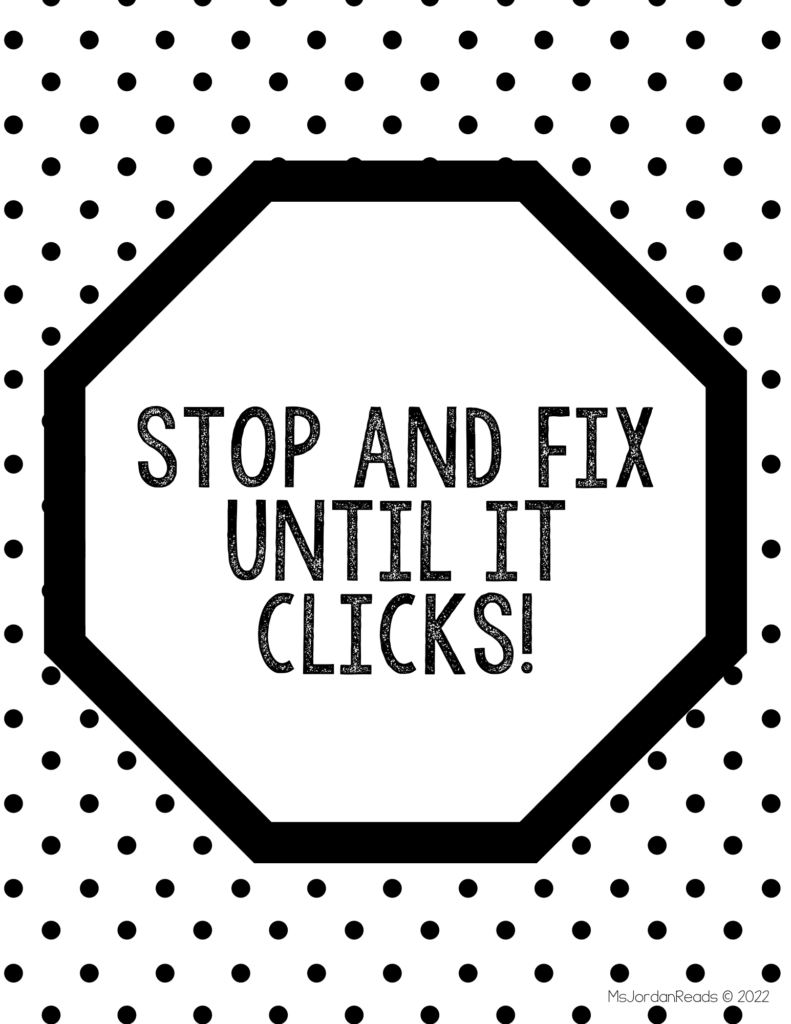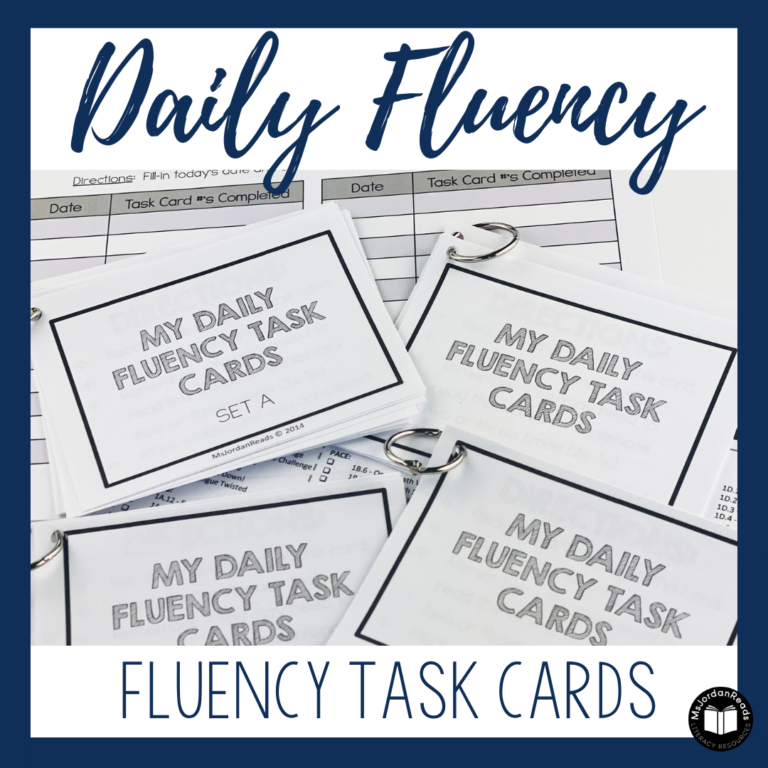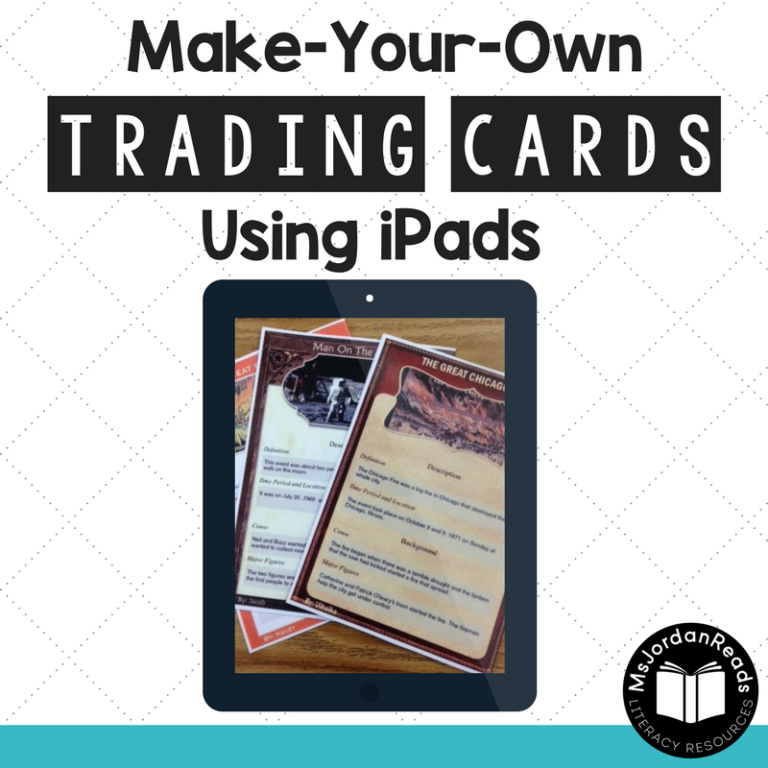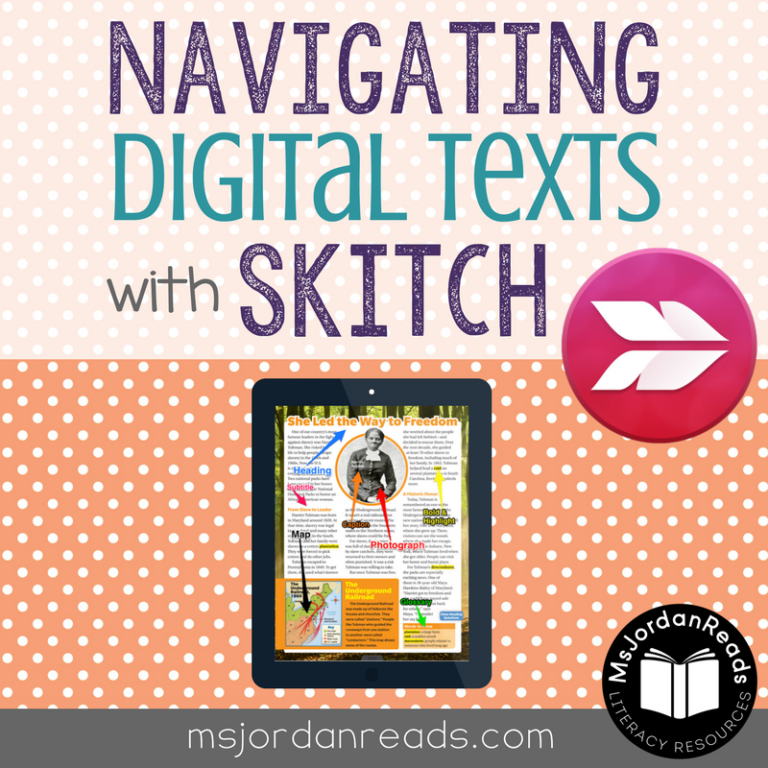Introducing the “Click and Clunk” Self-Monitoring Reading Strategy to Improve Comprehension
Self-monitoring is important skill for students to learn and apply while reading. Not only does it support reading accuracy and fluency, but it ensures that students are able to make meaning from what they are reading.
Learn more about how to help students monitor their reading for accuracy and comprehension using Click and Clunk cards. This self-monitoring strategy is the perfect tool to add to your literacy toolbox!
Introducing the Click + Clunk Strategy
“Click and Clunk” is a research-based self-monitoring strategy that can be used for students to monitor their reading accuracy and comprehension. This simple and easy-to-implement strategy is perfect for helping your students read more carefully and check for understanding.
When I introduce this strategy to students, I compare it to getting a flat tire. If your car had a flat tire, you wouldn’t keep driving, you would stop and fix it (hopefully!). Similarly, students must stop and fix up their errors or repair their understanding of a text while reading.
As a reminder for students to stop and fix up any miscues for accuracy, or to fix up their comprehension using the fix up strategies, I use the phrase, “Stop and Fix Until it Clicks”. The goal is for students to independently stop and fix their “clunk” until it looks right, sounds right, and makes sense. To have this phrase as an easy reminder, download a FREE poster to display in your classroom or use with your small groups!
Fixing Up Accuracy + Comprehension
While students are decoding a text, it’s important to stop and repair miscues to improve reading accuracy and fluency. Accuracy is important because it means students are reading correctly and with minimal errors. In doing so, they are able to read with fluency and can shift their focus to understanding the text.
Students need to monitor for comprehension, as well. It’s important to stop and fix-up any confusions or misunderstandings so that they can “read for meaning.” In order to gain knowledge from what they are reading, students need to move beyond word reading and fixing up word errors to focus on monitoring their understanding of a text.
Students should continuously monitor their reading accuracy and comprehension simultaneously by asking themselves these questions about the words, sentences and phrases they are reading:
- Does it look right?
- Does it sound right?
- Does it make sense?
If the answer is “no,” for any of the questions, then they need to fix it up! Be sure to review effective fix-up strategies so students will know WHAT to do when they have a Clunk. Don’t assume they know how to fix up their errors on their own! I mean… you wouldn’t assume someone knows how to change a flat tire when they first start driving, would you?!
Modeling Using Click + Clunk Cards
Modeling how to use these cards is extremely important. I often show my reading groups how to use the Click and Clunk cards by using a shared reading text and modeling with a think aloud every time I make a reading error or something doesn’t make sense, so they can see the entire process.
There’s something about correcting teachers that empowers and motivates students! For the second step, I have the students flip the card to “CLUNK” and hold it up every time they hear me make a silly reading error. They usually think this is hilarious and LOVE trying to catch my clunks. I try to make the errors very obvious at first, and slowly scaffold toward harder examples.
Taking Off the Strategy Training Wheels
As with any new strategy, scaffolding is important. After modeling, coaching, and LOTS of guidance students with this skill during small groups, students can practice on their own or with partners. Keep in mind, students don’t always hear their own errors, so it’s helpful for students to have partners help them at first, or to use a whisper phone to help with auditory recognition of errors.
If you notice that students are reading through an entire text without monitoring for comprehension using the Click and Clunk cards, you may want to consider chunking the text so that it reminds them to check for understanding at various stopping points. If at a stopping point they can’t retell or summarize the section, they should flip their card to “Clunk” and reread.
Practice, Practice, and More Practice!
After the initial practice, students should continue to use the Click and Clunk cards during reading workshop, small group instruction, partner reading, independent reading, or with books they take home. Encourage them to practice using the cards whenever they can, until they are able to do this process naturally and without the need for the red and green prompt card. You may wish to keep multiple Click and Clunk cards wherever they need them – in book boxes, reading bags, and at your small group table.
With time and ongoing practice, students will become strategic readers and will monitor their reading naturally and independently, without the need for any cards, tools, or visual reminders. We want students to be able to stop and self-correct their inaccuracies and misunderstandings on their own as part of the active reading process.
FREE Click Clunk Cards
While you can easily create your own Click and Clunk cards, I’m here to save you some time! Complete the form below or visit my resource library to download some “ready to go” cards that you can just print, cut, and go! If you don’t wish to subscribe to my email list, these cards are also available for purchase in my TpT store.








